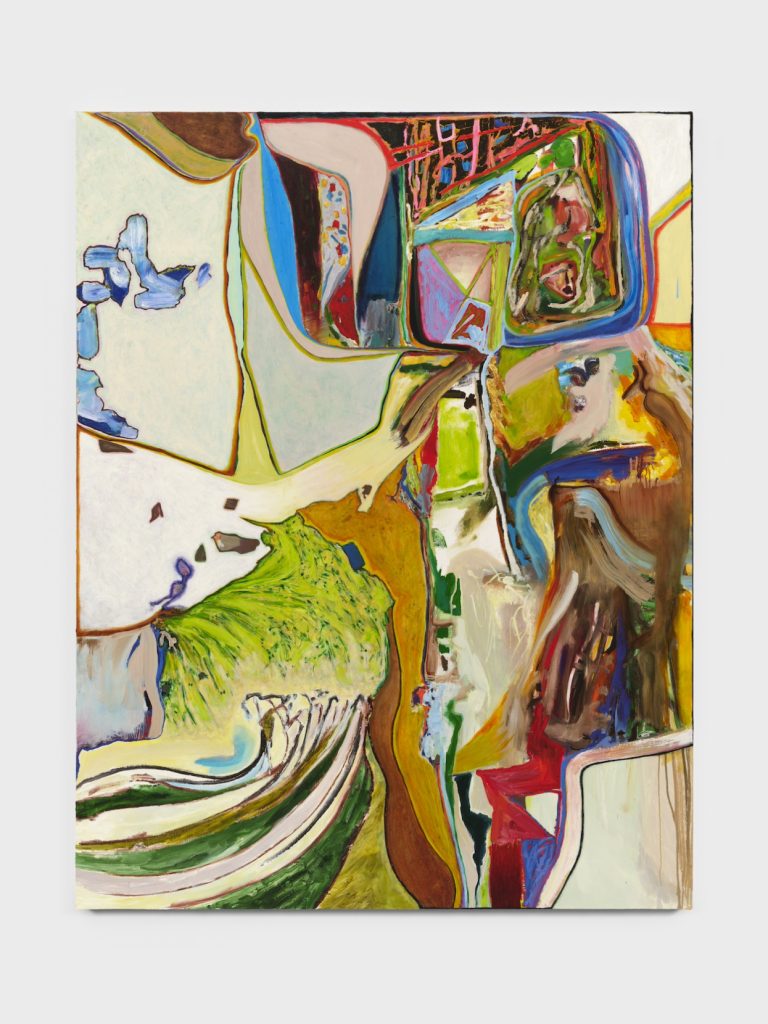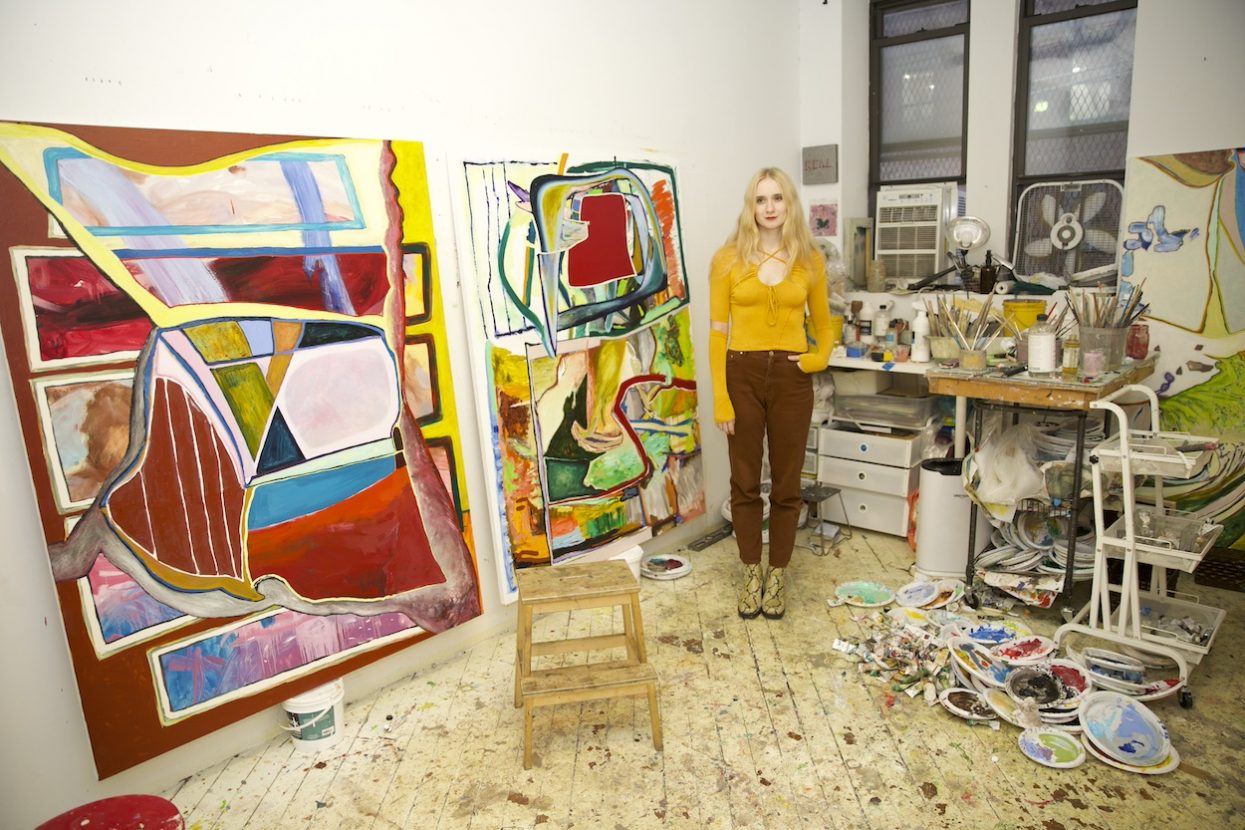Here, we ask an artist to frame the essential details behind one of their latest works.
Bio: Carrie Rudd, 29, Brooklyn (@carrierudd)
Title of work: Shit on the Lawn of the Library Just to Know That You’re Alive (2023).
Where to see it: Polina Berlin Gallery at NADA (1400 North Miami Avenue, Miami) until Dec. 9.
Three words to describe it: Frisky, curious, hopeful.
What was on your mind at the time: The painting is “based” on a lived experience, as my works almost always are in some way or another. A specific time and place was vividly on my mind: a Friday evening in autumn, sitting outside at the Hastings Public Library looking over the Hudson River, in 2009. My friend and I were 14. While making the painting, I was thinking about being that age–rapidly ripening, but simultaneously feeling stuck and stunted by circumstance. Riddled with angst, hyper-aware that there’s so much more out there but not quite able to get close enough.
My friend and I were bonded in this mutual frustration—we just maybe didn’t have the words. Instead, we’d search for minor (and foolish…) ways to act out, to release some of our teenage-grade punky energy, to remind ourselves we had a pulse. We made a pact that we wouldn’t ever tell anyone about this particular episode. I broke code earlier this year and told the story to my brother. Without missing a beat, he looks at me and recites what is now the title of the painting. And here I am, 15 years later, methodically memorializing it all into a painting. Almost as if it were a confession.
An interesting feature that’s not immediately noticeable: I worked on this painting over the span of four months, and during that time it has existed in at least ten different nearly complete iterations. The surface is stacked with material information, with history, with evidence of lives prior. You wouldn’t necessarily know that just by looking at the final image–you’d know if you got up close, though, and spent time with the topography and array of marks, really examining. That’s how I like to interact with paintings, and so that’s how I make them—I get excited when there’s a tactile reward for almost flicking the surface with your nose. The play that occurs between the background, middleground, and foreground is often a sort of reflection, albeit a bit twisted, of the consideration of past, present, and future that invigorates the painting’s concept.
How it reflects your practice as a whole: I often get a bit embarrassed when talking about my paintings and where/how their ideas originate, as I surely am right now. Ultimately, it’s a discomfort I choose to embrace in all my work. I might not feel super comfortable speaking out loud about specific experiences or realities, but painting is where I can go head-to-head with the harder, messier stuff, and doing so is important. You have to go through to get out! Also, there’s a certain tension between mischievousness and sensitivity, haphazardness and meticulousness, that’s entangled in the surface of this painting—threads that bind most, if not all, of my paintings.
One song that captures its essence: Hmm, that’s tricky. “Life is a Pigsty” by Morrissey.

